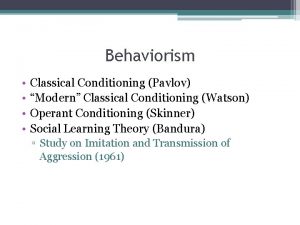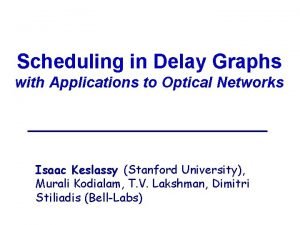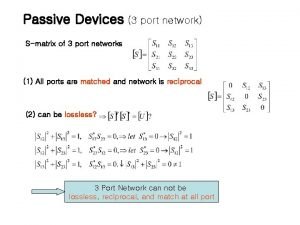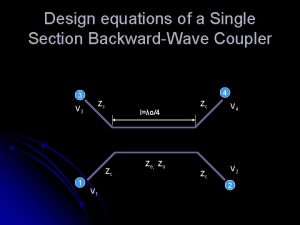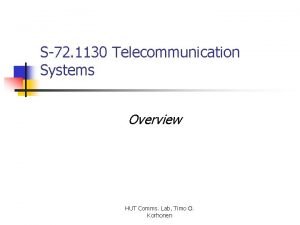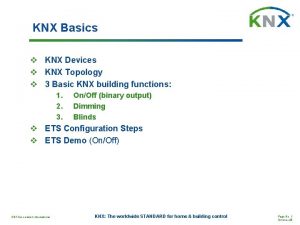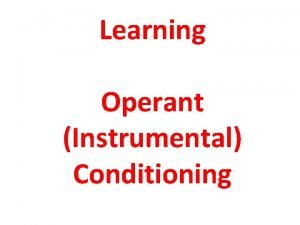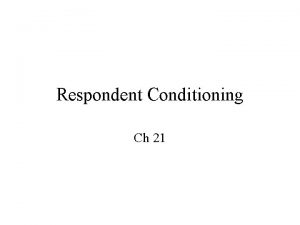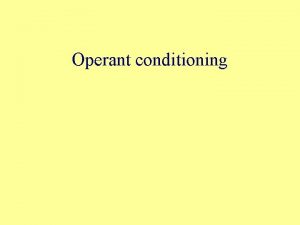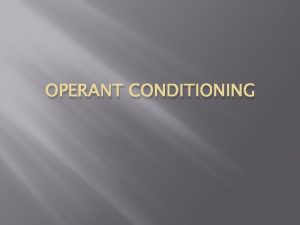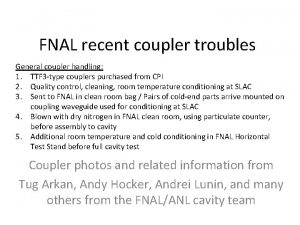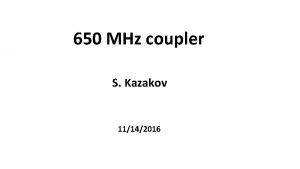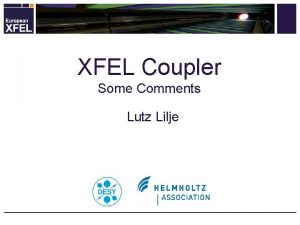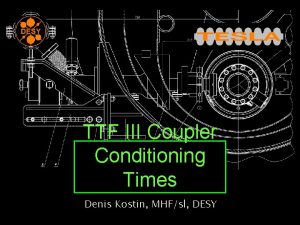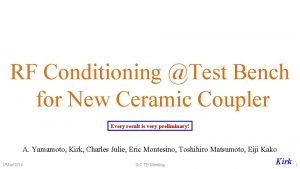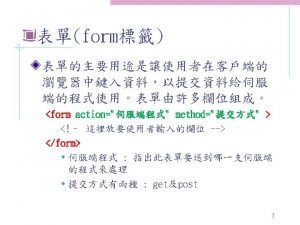The Cavity for RF Input Coupler Conditioning at




















- Slides: 20

The Cavity for RF Input Coupler Conditioning at SPring-8 Hiroyasu Ego, Yuji Ohashi, Hiroshi Saeki, Shigeki Sasaki, Hiroto Yonehara, Takahiro Watanabe SPring-8/JASRI Yoshitaka Kawashima Brookhaven National Laboratory prepared by H. Ego presented by S. Sasaki at CWRF 2012

SPring-8 XFEL(SACLA) New Subaru 1 Ge. V Linac

SPring-8 standing wave cavities 508. 58 MHz × 32 Storage Ring max 150 k. W × 8 Booster Synchrotron max 300 k. W

RF input couplers for the standing wave cavities at SPring-8 (Toshiba E 4263) both for the storage ring and the booster synchrotron • WR-1500 wave guide, WX-77 D wave guied to coaxial converter • • • Loop coupling at the tip rated pore: 300 k. W Vacuum sealing with cylindrical ceramics

Motivation • • Coupler must be conditioned with 300 k. W Vacuum leak of the prototype 5 -cell cavity

Cavity for Coupler Conditioning • 2 couplers are connected face to face on each side of the cavity ( inspired by a cavity developed at KEK by F. Naito ) • • • small in size easy to handle(small amount of radiation, etc. ) low cost(lower than 1/10 of the 5 -cell cavity)

structure coupler, upstream 427 mm 130 m m stub tuner Φ 146 m m coupler, downstream

Two-aperture cavity Qa β 2 β 1 P 0 PT PR PC →largerβis better

Characteristics of the cavity( estimated with HFSS) resonant frequency 508. 58 MHz coupling coeficient β 58 unloaded Q 4380 external Q 73. 3 power transmission rate PT/P 0 power dissipation rate PC/P 0 VSWR 98. 3% 1. 7% 1. 02

2 Asymmetric structure Protection of the coupler and tuner 1 3 1 from ・discharge ・leakage of magnetic field

magnetic field electric field

resonant frequency change accorging to the errors at manufacruring, and assembling ↓ Sensitive to the gaps -1. 6 MHz/mm adjust the frequency by the tuner -12. 5 MHz/mm tunable range > ± 50 MHz

VSWR = 1. 02 ; 0. 65 MHz ( < 1. 1 )

1. 4 0. 4

Thermal analysis for 300 -k. W operation Water channel 6 L/min 30℃ : Φ 8 mm × 11 + (3 mm× 71 mm) × 2

Structure analysis for 300 -k. W opration Design goal:one third of tensile strenght of copper at maximum [200 MPa / 3]

Performance test 1 coupler: upstream low power test ・frequency:tuned to 508. 58 MHz -11 MHz/mm ・transmission loss:≈2. 6%(including loss of transition elements) (calculated cavity loss 1. 7%) tuner cavity ・VSWR: 1. 02 manufactured as designed coupler: downstream

Performance test 2 high power test ・pressure at the start of the test:2× 10 -4 Pa ・water supply: 37 L/min. 32. 5 ℃ Targeted goal: 300 k. W

achieved 300 k. W in 20 hours Onsets of Interlock events ・without constant reflection ・no abnormal temperature rise of the body ・no vacuum leak( 2× 10 -4 Pa @ 300 k. W) ・radiation < regulation → no shield ・vacuum(> 8× 10 -3 Pa): 108 times ・power reflection(> 20 k. W) : 20 times

Summary • • • Developed a compact cavity for coupler conditioning Small, easy to handle Adjustable requency by the tuner VSWR 1. 02 : power loss ≈2% Rated power of the coupler: 300 k. W transmission test was succesfuly achieved
 Orbital body
Orbital body Operant conditioning classical conditioning
Operant conditioning classical conditioning 3 phase model of operant conditioning
3 phase model of operant conditioning Different types of reinforcement schedules
Different types of reinforcement schedules Classical conditioning vs operant conditioning
Classical conditioning vs operant conditioning Classical conditioning and operant conditioning
Classical conditioning and operant conditioning Difference between operant and classical conditioning
Difference between operant and classical conditioning Classical conditioning v. operant conditioning
Classical conditioning v. operant conditioning Classical conditioning vs operant conditioning
Classical conditioning vs operant conditioning When was the little albert experiment
When was the little albert experiment Classical conditioning and operant conditioning.
Classical conditioning and operant conditioning. Left gastric vein
Left gastric vein Label the abdominal regions.
Label the abdominal regions. Which membrane encloses the abdominopelvic viscera?
Which membrane encloses the abdominopelvic viscera? Peritoneum definition
Peritoneum definition Star coupler
Star coupler Coupler curve synthesis
Coupler curve synthesis Coupled line coupler
Coupled line coupler Backward wave coupler
Backward wave coupler Star coupler
Star coupler Knx topologi
Knx topologi








